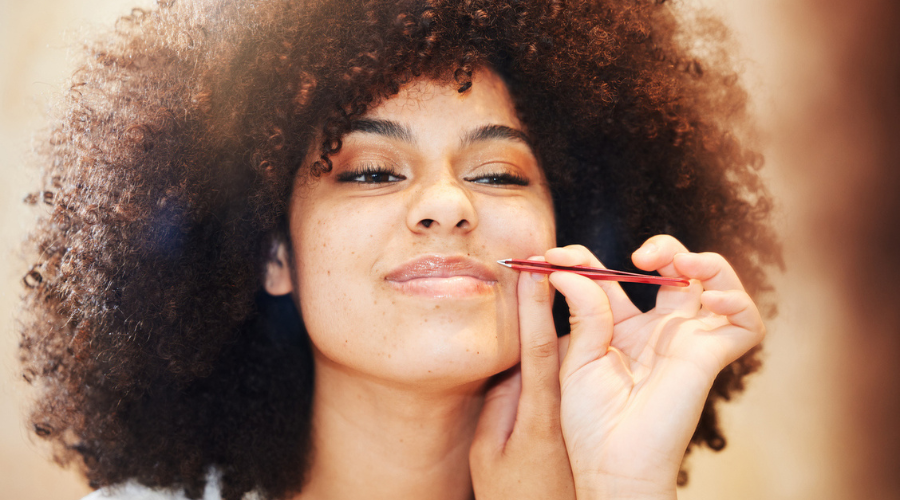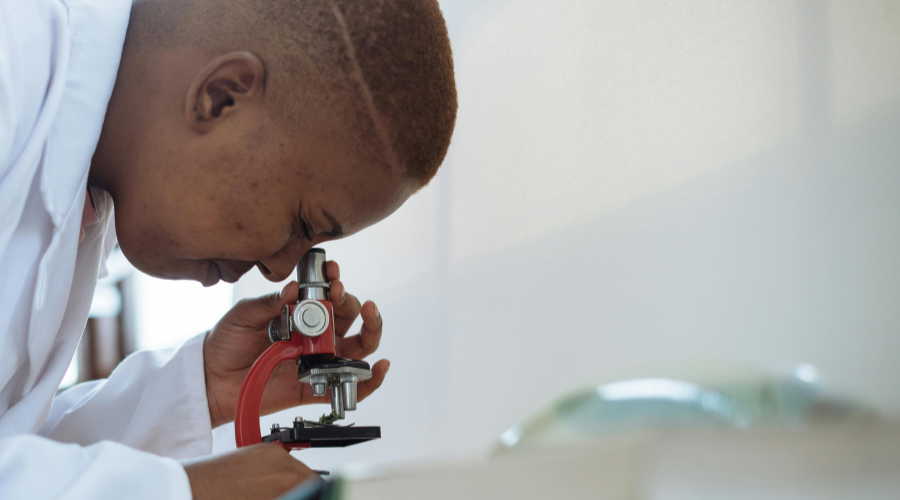Let's chat about the hair that sprouts on our faces and those pesky dark spots. You know, the ones we try to hide. If you've got Hirsutism like me, you've probably noticed your facial hair can range from straight to super curly. And curly hairs that grow back into your skin? Not so fun. They cause bumps, ingrowns, and hyperpigmentation.
The tone of your skin impacts how obvious it looks, too. But don't stress; I've got you covered. In this article, we'll break down how hair texture and skin color affect your Hirsutism so you can figure out the best ways to embrace your unique beauty. Ready to feel empowered and flawless? Let's do this.
The Spectrum of Hair Types in Hirsutism: Straight, Curly, Coily
If you’re dealing with Hirsutism, the type of hair growth you experience can vary. Some women grow straight, fine facial hair. For others, the hair comes in curly or tightly coiled. The curlier the hair, the more prone it is to become ingrown, causing irritation and dark spots.
Curly or coily facial hair tends to grow out of the skin and then curl back in, trapping the hair under the skin. This can lead to painful ingrown hairs and post-inflammatory hyperpigmentation (dark spots).
Luckily, there are some ways to prevent and treat curly and coily ingrown hairs. Exfoliating your skin gently but regularly can help loosen trapped hairs and reduce ingrowns. When removing facial hair, be extra gentle and pull the hair out in the direction of growth to minimize breakage under the skin. After shaving or waxing, apply a soothing cream or serum to hydrate your skin and reduce irritation. Finally, if you do get ingrown hairs and dark spots, a high-quality fade oil can help fade hyperpigmentation over time.
We also recommend incorporating a moisturizer into your routine. Moisturizing daily helps soften the hair and skin, making the hairs easier to extract. In addition, sterilized tweezers can be used to carefully pull ingrown hairs out from the root to avoid scarring and speed healing. Apply a warm compress for 10-15 minutes before extracting to open up pores and soften the skin.
The most important thing is to be patient and kind to yourself. Curly and coily hair textures are natural and beautiful. With some tweaks to your routine and products, you can minimize the discomfort that ingrown hairs cause and celebrate your unique features.

Curly Facial Hair and Ingrown Hairs: Tips to Prevent Irritation
For women with Hirsutism, curly facial hair can be an especially annoying problem. The curly hair strands tend to curl back into the skin as they grow, causing ingrown hairs and irritation. To avoid ingrown hairs and the red bumps that come with them, here are some tips:
- Exfoliate the area regularly. Use a facial scrub to unclog hair follicles and allow the hairs to grow through the surface of the skin.
- Tweeze instead of shaving or waxing when possible. Tweezing removes the hair from the root, so it takes longer to grow back. This means less chance of ingrown hairs developing. If shaving or waxing, be sure to exfoliate first and moisturize after to prevent ingrown hairs.
- Moisturize daily. Keep the area well hydrated, especially after hair removal. Use a non-comedogenic moisturizer that won't clog pores. Moisturizing softens the skin and opens up pores so hairs can emerge more easily.
- See a dermatologist if ingrown hairs become inflamed or infected. For severe or cystic ingrown hairs, a dermatologist may need to extract the ingrown hair and possibly prescribe oral medication like antibiotics to clear up infection. They can also recommend medical procedures to prevent ingrown hairs from coming back.
Consider a Hair Reduction Oil
Hair reduction oils can help minimize ingrown hairs and irritation. Apply a small amount to the affected area. Use a hair reduction oil consistently for best results. Over time, the oil can help thin the hair, reduce tangles and ingrown hairs, and soothe irritation and inflammation.
While hair reduction oils won't remove hair completely, they can be an effective addition to your curly or coily hirsutism treatment regimen, especially when used along with other methods like threading, waxing, or laser hair removal.
With diligent exfoliation, moisturization and the right hair removal methods for your hair type, ingrown hairs and the irritation that comes with them can be avoided. Be patient and consistent, and your skin will thank you.
Hyperpigmentation and Dark Spots
If you have curly or coily facial hair, you may experience issues with hyperpigmentation, especially around areas where ingrown hairs form. The constant plucking and picking at ingrown hairs can lead to dark spots on the skin, known as post-inflammatory hyperpigmentation. These spots are caused by an increase in melanin production, the pigment that gives skin its brown color.
How to Prevent and Treat
To avoid hyperpigmentation, it’s best to prevent ingrown hairs in the first place. Exfoliate the area regularly using a glycolic acid toner or serum to remove dead skin cells. This will allow hairs to grow through the surface rather than curling back under. It’s also important to moisturize daily to soften skin and hair follicles.
For darker skin tones, hyperpigmentation may be more persistent. In these cases, it will take more diligence with a fade oil to see the reduction in hyperpigmentation.
To reduce hyperpigmentation, follow a routine of applying a hair reduction fade oil 2 times per day.
Consistency and patience are key. It can take weeks or months of regular use to see noticeable results when fading hyperpigmentation. The good news is, with the proper treatment and care, those annoying dark spots will eventually disappear, leaving you with smooth, even-toned skin once again.
Living With Hirsutism: Treatment Options and Lifestyle Tips
If you’re dealing with Hirsutism, the excess facial or body hair can be frustrating to manage. The hair growth is caused by hormonal imbalances, so getting to the root cause is key. In the meantime, you have options to reduce unwanted hair and make it less noticeable.
For curly or coily facial hair, ingrown hairs are common and require extra care. Exfoliate the area regularly using a facial scrub or facial brush to remove dead skin cells. This will allow hairs to grow through the skin properly instead of curling back in. Apply a moisturizer daily, especially after hair removal.
For hair removal, tweezing is a popular method for stray hairs but can be time-consuming for larger areas. Waxing pulls hair from the roots but may irritate sensitive skin. Hair reduction oil is a tried-and-true method I use myself.
With patience and consistency in your treatment plan, you can get Hirsutism and hyperpigmentation under control and feel more confident in your own skin. Don’t hesitate to talk to your doctor about all options to find what works best for you based on your hair type, skin tone, lifestyle, and personal preferences.
Whether your Hirsutism causes coarse dark hairs to sprout straight from your chin or delicate baby curls to peek out along your cheeks, know that you're not alone. Take care of that skin, avoid ingrowns, and talk to your doc if it really bothers you. We all have our things. Your beauty shines through it all.




